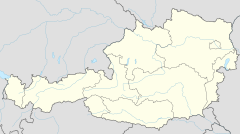User:Curberes/sandbox
| Memory of Mankind | |
|---|---|
 | |
| General information | |
| Status | Running |
| Type | Salt mine |
| Location | Salzberg |
| Town or city | Hallstatt |
| Country | Austria |
| Coordinates | 47°33′48″N 13°38′15″E / 47.563428°N 13.637606°E |
| Groundbreaking | 2012 |
| Website | |
| Official website | |
Memory of Mankind (MOM) is a preservation project funded in 2012 by Martin Kunze. The main goal is to preserve modern civilization from oblivion and collective amnesia. Informations and knowledge are printed on ceramic tablets, later buried in the salt mine of Hallstatt, Austria. More than a simple archive project, it aims to create the "Time capsule of our era"[1], letting people participate by allowing them to submit a text.
Ambitions
[edit]Several motivations underlie the project. The most obvious one is the concern about preserving our knowledge. In times where global warming, nuclear and biological threat the existence of civilization, saving the core knowledge and culture acquired over centuries is a backup measure[2]. In case of a collapse, the MOM project could help survivors to rebuild civilization. Linked to this, an another reason is of political order : facing the lack of reactivity of authorities concerning the global warming, the MOM project is a reminder of what can happen. Roman and Greek civilizations whose histories have been reconstructed by the little percentage of texts and artifacts who survived until our days are examples that have inspired the MOM project. Finally, it's an critic of our digital civilization : according to Kunze, it may last nothing of the 21th century in the future, since most of our interactions are now virtual. The "accuracy versus bullshit" is one of the main themes of the MOM project, worried about lost of information, the project can only aim to save a fragment of the informations produced until today, but this fragment has to be representative[3].
The salt mine
[edit]Hallstatt salt mine is one of the oldest salt mine exploited by man. The preservation virtue of salt added to the natural sealing that will occur in this century and the relative stability of the place are the majors criteria that favor this place as a vault for the MOM archives[4].
Ceramic tablets
[edit]Sumerian clay tablets greatly inspired MOM's tablets. These modern variants are made of ceramic : a material that can handle information for a very long time, resists up to 1200°C (2200°F), chemicals, water, radiation, magnetism and pressure and can "only be destroyed by a hammer". The goal is to have the most durable support available, able to carry his message over a long span of time (one million year). Most of the tablets size one man-hand, but Kunze designed a microscopic font allowing a ceramic tablet of 20 cm2 to store 5 millions of character. Variations of languages over time and even the hypothesis of an alien intelligence discovering the MOM archives has been anticipated. Again, the creators of MOM dig in historical methods, they designed their own "Rosetta-Tablet", translated in several languages with the according character set, the number system, an astronomical time indicating “2013” (via extremely rare occurring events of simultaneous transits of Mercury and Venus) and thousand of images with concrete situations and words correspondents[5].
Token and ceremonial gathering
[edit]A token will be delivered to all participants of the MOM project. On its limited surface of 6,5 cm in diameter the token indicates a spot on our planet with an precision of some ten meters : the entry to the MOM archive. The front-side depicts the outline of Europe, pointing to Hallstatt. The backside shows the shape of the Hallstatt Lake and the position of the entry to the MOM archive relatively to the lake. In addition there is a hint to the salt mineral (a cubic structure). A ceremonial and passing rite is attached to this token : the owners are supposed to gather every 50 years in front of the salt mine to commemorate and decide if the humanity needs or not the MOM archives. The token should be transmitted to the descendants of the owners[6].

Crowdfunding aspect
[edit]Memory of Mankind distinguishes itself by asking for contributions from public organisms, like private one (companies, common people). Contributions can be of financial nature or simply content to be stored. Cook recipes like personal stories are subject that may be stored. In exchange of a contribution, the contributor receives one of the ceramic tokens the project will spread.
See also
[edit]References
[edit]- ^ http://www.genios.de/presse-archiv/artikel/FAZ/20130821/die-botschaft-der-festplatte-mensch/FD1N201308213898008.html
- ^ https://www.welt.de/print/wams/article149394918/Das-grosse-Vergessen.html
- ^ https://www.memory-of-mankind.com/english/facts-and-figures/accuracy-vs-bullshit/
- ^ http://www.bbc.com/future/story/20161018-the-worlds-knowledge-is-being-buried-in-a-salt-mine
- ^ http://www.oecd.org/officialdocuments/publicdisplaydocumentpdf/?cote=NEA/RWM/RKM(2013)5/PROV&docLanguage=En
- ^ https://www.theatlantic.com/technology/archive/2017/01/human-knowledge-salt-mine/512552
External links
[edit]- Official website
- Human Document Project (similar project)

